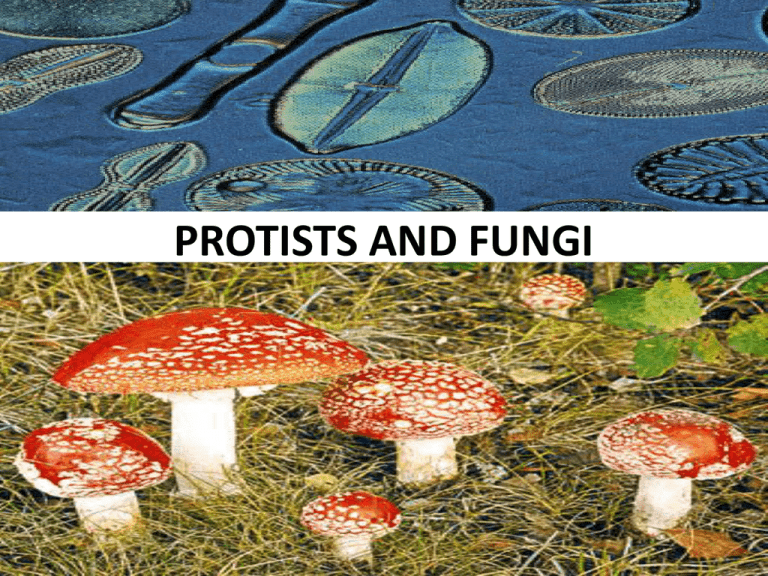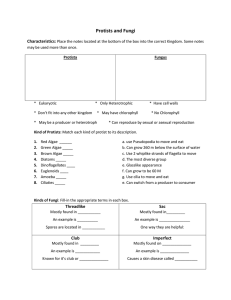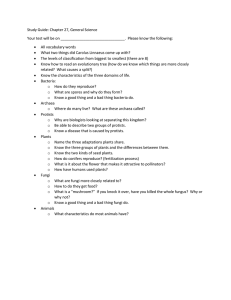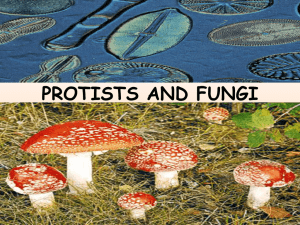Protist vs. Fungi Cells
advertisement

PROTISTS AND FUNGI Create this G.O. PROTIST Similar/Compare Different/Contrast FUNGI 3 Differences among Protist Cells •Animal-like •Fungus-like •Plant-like Animal-like Protists (Protozoans) *Unicellular *Heterotrophs Microscopic DNA , cytoplasm, vacuole, cell membrane, nucleus (1 or more) *4 groups based on movement: flagella (tail), cilia (hair), pseudopods (false feet) and sporozoans (parasite) Fungus-like Protists • • • • • Example: mildew Unicellular Like animals - heterotrophs Like plants - cell walls made of cellulose Reproduce by spores (tiny cells that can grow into a new organism) • Not in fungi kingdom because they can move at one point in their lives. Plant-like Protists • Example: algae, giant kelp • Autotrophs • Size: microscopic unicellular to very large multicellular • Like plants - cell walls made of cellulose (sugar) • Contain different pigments so they come in different colors. • Euglena: special type of algae -when there is no sunlight they become heterotrophic. Similarities among Protists • Examples: Ameoba Pseudopdia, Paramecium Cilia, Euglenoid Flagellum, and Sporozoan Parasite • All eukaryotes with nuclei (cilia-2 nucleus) • DNA • Unicellular or multicellular • Cytoplasm • Cell membrane • Vacuoles • Ribosomes • Reproduce by binary fission or congugation. • no definite shape. • Live in moist surroundings. • Autotrophs, heterotrophs, or both. • Some can move - others cannot. Fungi Cells Yeast Mold Mushroom Differences: Four types of Fungi • Threadlike - produce spores in their threadlike hyphae (ex. Bread mold) • Sac - produce spores in structures that look like sacs (ex. Yeast) Since yeast is unicellular, they reproduce by budding. A new cell grows from the origional cell body then breaks off. Club - produce spores in structures that look like clubs (ex. Mushrooms) Imperfect - those that cannot reproduce sexually (ex. Penicillin) Similarities among Fungi • Eukarayotes • Multicellular - Except for yeast which is unicellular • Nucleus • DNA • Cytoplasm • Cell membrane • Ribosomes • Cell walls made of Chitin (sugar) • Use spores to reproduce • Hyphae : threadlike tube structure used to get food, break it down, and absorb it • Heterotrophs • Need warm, moist places to grow. • Examples: mushrooms, molds, and yeast, ringworm, lichen, athlete’s foot








